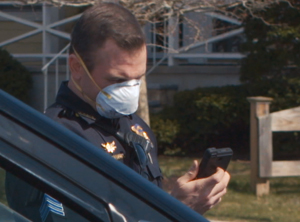
by AllThingsECC.com | Jun 1, 2021 | Articles, Comm Center News

FirstNet is much more than a wireless broadband network for first responders. It’s an entire ecosystem of solutions that includes FirstNet Certified™ and FirstNet Verified™ apps to help first responders do their important work. And the Mission Critical App Webinars give us some real-life examples of how agencies put them to use.
Through these webinars, Mission Critical Communications highlights the robust ecosystem of apps already helping public safety agencies automate, simplify, and digitize their difficult work. Mobility and security experts thoroughly evaluate every included solution…
by AllThingsECC.com | May 31, 2021 | Articles, Comm Center News
By Kenzie Capece, Senior Public Safety Advisor, First Responder Network Authority
Earlier this month, the First Responder Network Authority’s (FirstNet Authority) Public Safety Advisory Committee (PSAC) held its Spring Business Meeting to discuss the committee’s efforts in 2021 and its ongoing plans to support FirstNet’s growth and expansion. Discussions highlighted accomplishments and business updates in 2021, PSAC Strike Team efforts, and PSAC User Working Group updates.
READ FULL ARTICLE
by AllThingsECC.com | May 31, 2021 | Articles, Comm Center News
Lawrence J. Spiwak
As the demand for mobile wireless services continues to explode, the search for underutilized spectrum that can be repurposed from low- to high-value commercial use never ends. For the most part, the Federal Communications Commission under the leadership of former Chairman Ajit Pai had a good track record in this regard, including successfully repurposing the 900 MHz band, navigating the byzantine complexities of the C-Band to get that auction off the ground, and converting the 5.9 MHz band for Wi-Fi use. But while kudos are certainly due, in fairness we need to recognize that the Pai Administration also had its missteps.
The opinion article appears in yalejreg.com dated May 27, 2021
READ FULL ARTICLE HERE
by AllThingsECC.com | May 31, 2021 | Articles, Comm Center News
Who knows more about what public-safety and critical-communications users need? I think the answer has changed several times over the years, and today it is those within the public-safety community itself who best know which communications capabilities they need and which capabilities they would like to have.
Public-safety communications turned from landline to two-way radio starting in the 1920s and further matured in the 1930s. At that time, the main players in the public-safety communications arena were Link Communications and Motorola. Both companies provided radio equipment and technology during World War II, and when the war was over, they returned to the public-safety market where a number of significant advancements had been made…
by AllThingsECC.com | May 28, 2021 | Articles, Comm Center News
FCC commissioners this week released an order that grants a request from the Public Safety Spectrum Alliance (PSSA), indefinitely suspending the 4.9 GHz rules passed last year that would have let states lease the longtime public-safety spectrum to commercial entities.
FCC Chairwoman Jessica Rosenworcel, Geoffrey Starks and Nathan Simington delivered the three supporting votes for the stay order, which will stay in place for an indefinite period of time while the commission deliberate on petitions for reconsideration for the 4.9 GHz order that was approved last fall. At that time, the Republican FCC led by Chairman Ajit Pai passed the measure in a 3-2 party-line vote…

by AllThingsECC.com | May 26, 2021 | Articles, Comm Center News
A bipartisan Senate bill would direct the Federal Communications Commission not to sign off on any applications from companies on its national security threats list, including Huawei, after one of the commissioners pushed for a bigger crackdown on Chinese Communist Party-linked companies in the United States.The new legislation, the Secure Equipment Act of 2021, co-sponsored by Republican Sen. Marco Rubio and Democratic Sen. Ed Markey, would mandate that the FCC no longer review or approve business requests from entities on the FCC’s designated list, with the Senate offices saying this would “prevent further integration and sales” of Huawei and other Chinese state-backed firms inside the U.S. “regardless of whether federal funds are involved…





